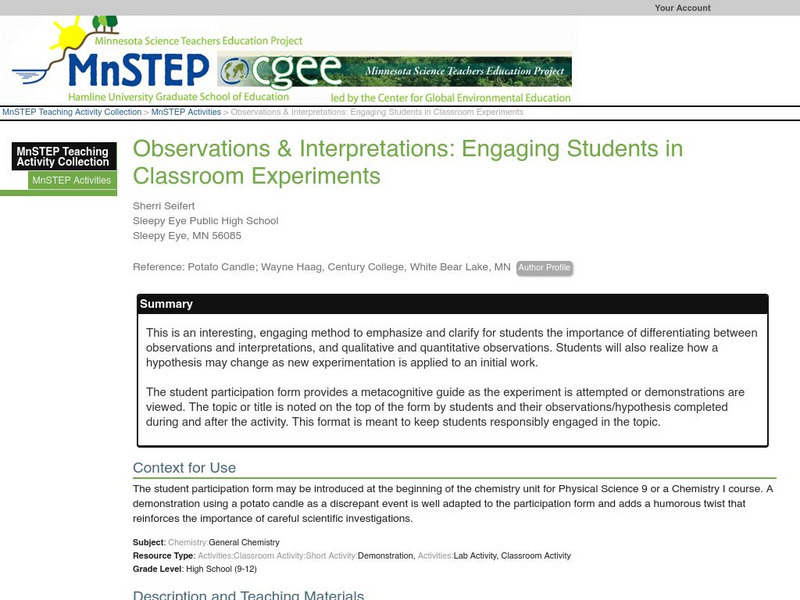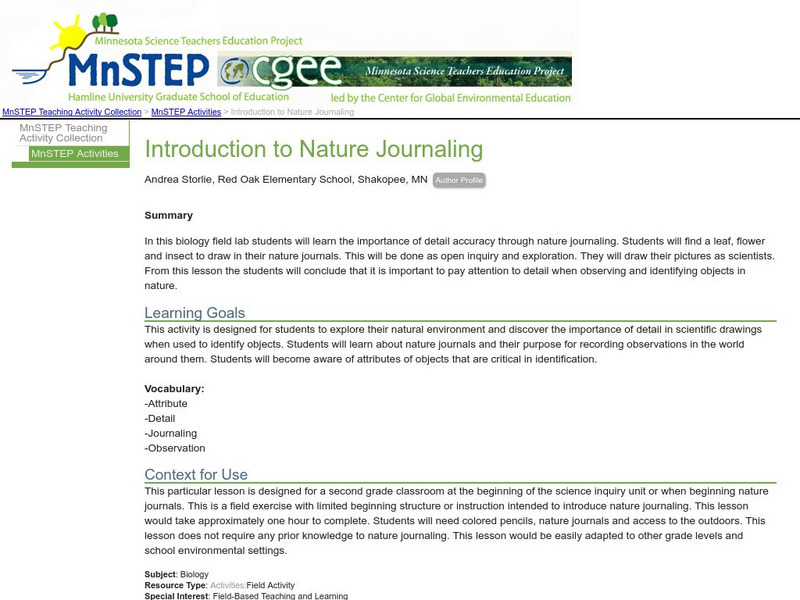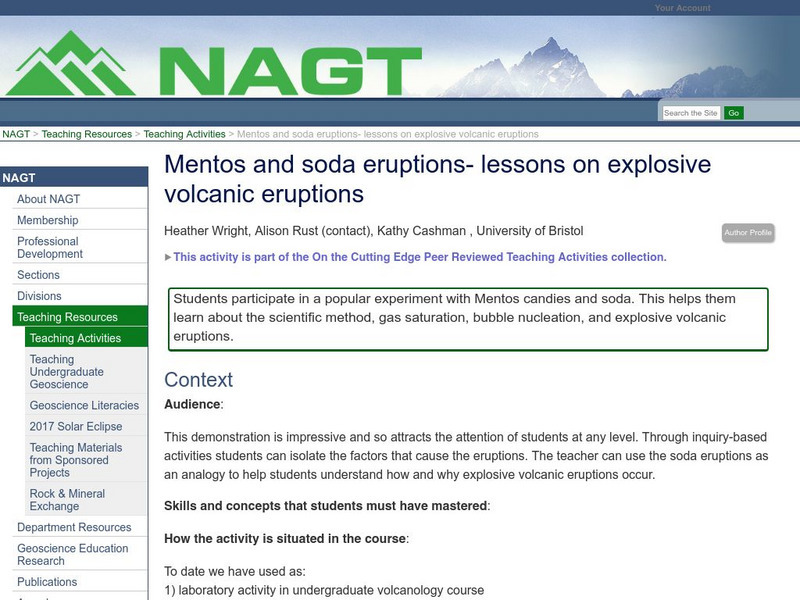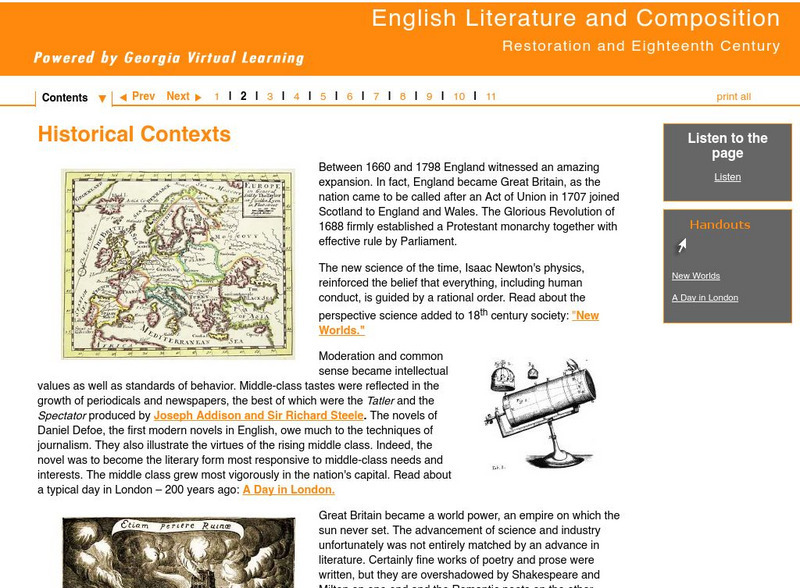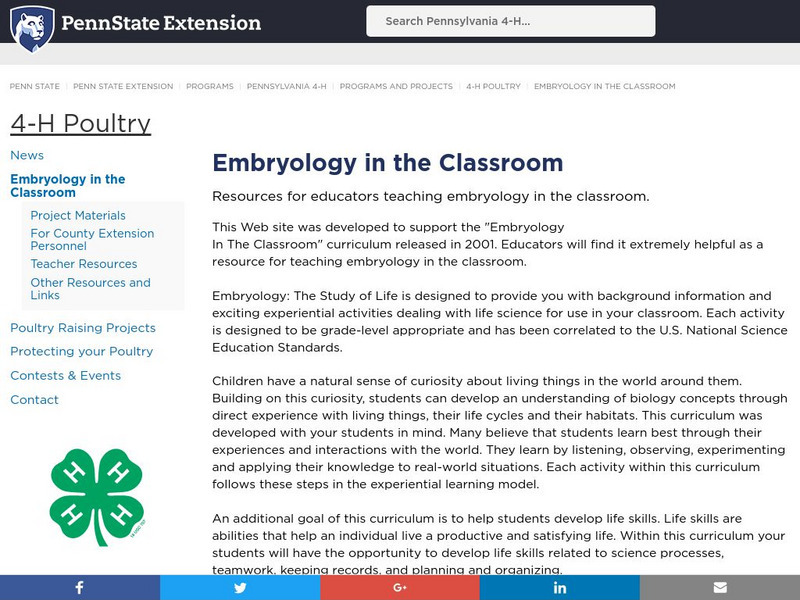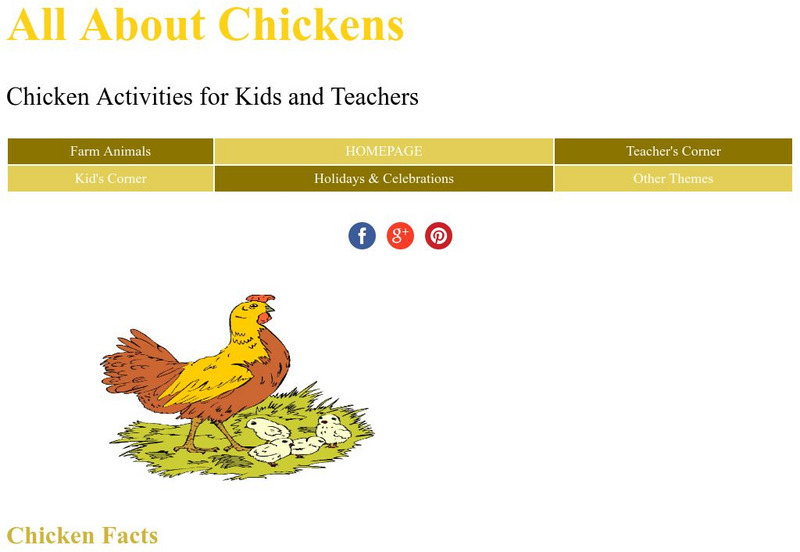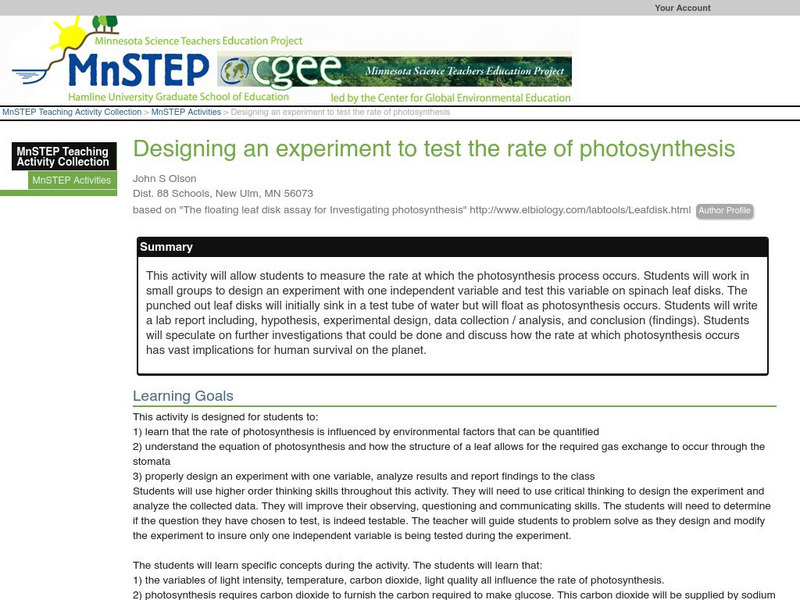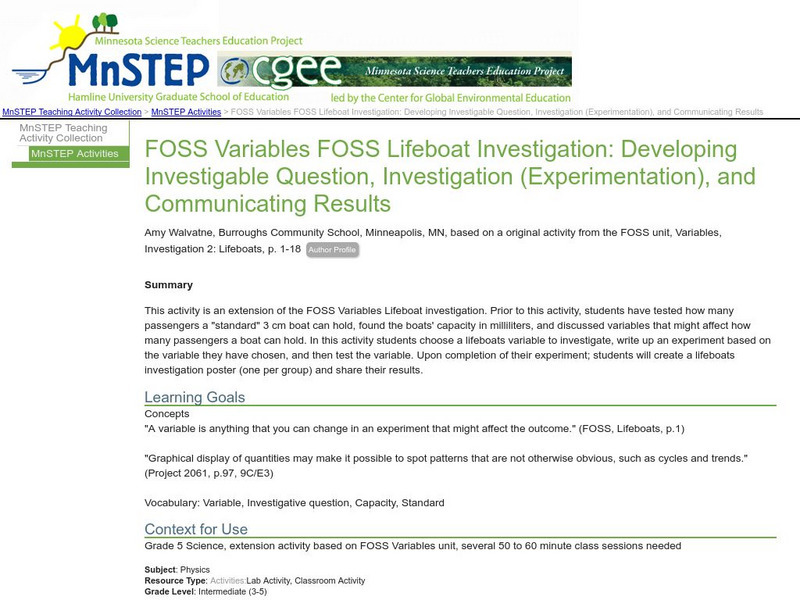Science Education Resource Center at Carleton College
Serc: Observations & Interpretations: Engaging Students in Classroom Experiments
Use this method to emphasize and clarify for learners the importance of differentiating between observations and interpretations, and qualitative and quantitative observations. Students will learn how a hypothesis may change as new...
Science Education Resource Center at Carleton College
Serc: Introduction to Nature Journaling
In this activity, students will be introduced to nature journaling and discover the importance of detail accuracy in scientific drawings when used to observe and identify objects.
National Association of Geoscience Teachers
Serc: Mentos and Soda Eruptions: Lessons on Explosive Volcanic Eruptions
Students will learn about volcanic eruptions, the scientific method, gas saturation, and bubble nucleation by participating in a popular experiment with Mentos candies and soda.
Georgia Department of Education
Ga Virtual Learning: Restoration and Eighteenth Century: Historical Contexts
This is an historical context for the Restoration and Eighteenth Century period in England. It provides a list of dates and titles for sections of the period and discusses the authors and characteristics of each. It provides links to "A...
Alabama Learning Exchange
Alex: Science Is a Wonderland
This is an inquiry lesson to teach students critical thinking skills. The student will learn through discovery what inquiry skills are and how they are used. They will learn how scientists use these skills in the scientific method to do...
Other
University of Richmond: Archimedes Initiative
The Archimedes Initiative is home to thematic videos on aspects of the inquiry cycle. With coverage of the ins and outs of science fair projects and video interviews of science fair participants who discuss their projects, discoveries,...
Science Education Resource Center at Carleton College
Serc: Boiling Water With Ice: Effect of Pressure on the Boiling Point of Water
For this activity, which is a discrepant event with guided inquiry, the teacher will go through the steps of boiling water with ice. Through the learners telling and recording WHAT is happening, the teacher is showing the students what...
Science Education Resource Center at Carleton College
Serc: Investigating Projectile Motion: Creating a Catapult
This lesson is for 9th grade physical science students. It begins with an inquiry-based lesson using a projectile motion computer simulation. It culminates with students building a catapult; applying and connecting science knowledge from...
Alabama Learning Exchange
Alex: Where Did You Get Those "Jeans"?
This lesson can be interdisciplinary involving science, mathematics, and language arts. The primary nature of the lesson is inquiry, project, and technology-based. In science this project is a culminating activity in the heredity unit.
Science Education Resource Center at Carleton College
Serc: Investigating Earth and Moon Surface: Impact Craters
In this activity, students will investigate how impact craters are formed. In small groups, students will build a model of the moon's surface with flour paste and drop a marble from different heights to discover how the speed of an...
Read Works
Read Works: Developing Possible Solutions
[Free Registration/Login Required] An informational text about solving problems. A question sheet is available to help students build skills in reading comprehension.
TeachEngineering
Teach Engineering: A Lego Introduction to Graphing
Students use a LEGO ball shooter to demonstrate and analyze the motion of a projectile through use of a line graph. This activity involves using a method of data organization and trend observation with respect to dynamic experimentation...
PBS
Pbs Teachers: Changing Your Mind: Understanding Braille
Explore the communications system based upon a pattern of raised dots called Braille, and design a method of inquiry that uses the scientific method to compare the effectiveness of reading dot cells against reading raised alphabet...
University of Illinois
University of Illinois Urbana Champaign: Chickscope: The Journey Begins
Journey with the chicken egg, from formation to hatching, and learn about its embryology.
Pennsylvania State University
Penn State University: Embryology in the Classroom
Come and learn more about how to incorporate embryology into your classroom. This site features tons of information about the embryology of chickens.
Other
Kiddy House: All About Chickens for Kids and Teachers
This comprehensive resource features everything you want to know about chickens. Students and teachers will "cluck" when they explore this site.
Science Education Resource Center at Carleton College
Serc: Designing an Experiment to Test the Rate of Photosynthesis
Using spinach leaf disks, students measure the rate at which the photosynthesis process occurs. Students speculate on further investigations that could be done and discuss how the rate at which photosynthesis occurs has vast implications...
Science Education Resource Center at Carleton College
Serc: Foss Lifeboat Investigation
The second of a lesson series contains an activity where young scholars choose a lifeboat's variable to investigate, plan an experiment based on the variable they have chosen, and then test the variable. Upon completion of their...
PBS
Pbs Teachers: Daredevil Ball Jump Experiment
Construct a device to measure the height of a bounced ball, then compare the bouncing heights of various types of balls. Record the results on a chart.


